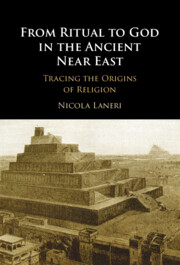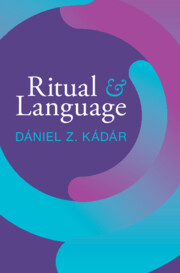264 results
1 - Orientation
-
-
- Book:
- The Cambridge Comparative History of Ancient Law
- Published online:
- 09 May 2024
- Print publication:
- 30 May 2024, pp 1-19
-
- Chapter
- Export citation
What Sadness for Husain? Comparative ethnographic analysis of two Muharram celebrations in Sindh and Punjab (Pakistan)
-
- Journal:
- Critical Pakistan Studies ,
- Published online by Cambridge University Press:
- 20 May 2024, pp. 1-26
-
- Article
-
- You have access
- Open access
- HTML
- Export citation

From Ritual to God in the Ancient Near East
- Tracing the Origins of Religion
-
- Published online:
- 03 May 2024
- Print publication:
- 09 May 2024
Chapter 6 - Sophocles’ Oedipus Tyrannus
-
- Book:
- Choral Tragedy
- Published online:
- 25 April 2024
- Print publication:
- 02 May 2024, pp 135-159
-
- Chapter
- Export citation
5 - The Portrayal of the Great Lady in the Maẓhar al-ʿajāʾib
-
- Book:
- Female Religiosity in Central Asia
- Published online:
- 25 April 2024
- Print publication:
- 02 May 2024, pp 92-115
-
- Chapter
- Export citation
3 - The Culture of the Bar
-
- Book:
- Brotherhood of Barristers
- Published online:
- 11 April 2024
- Print publication:
- 18 April 2024, pp 52-89
-
- Chapter
- Export citation
Caches, Memory, and Ritual at the Maya City of Cival
-
- Journal:
- Latin American Antiquity , First View
- Published online by Cambridge University Press:
- 16 April 2024, pp. 1-19
-
- Article
-
- You have access
- Open access
- HTML
- Export citation
Chapter 6 - The Kalends of January
-
- Book:
- Popular Culture and the End of Antiquity in Southern Gaul, c. 400–550
- Published online:
- 15 March 2024
- Print publication:
- 28 March 2024, pp 173-218
-
- Chapter
- Export citation
Chapter 5 - An Alternative View
-
- Book:
- Popular Culture and the End of Antiquity in Southern Gaul, c. 400–550
- Published online:
- 15 March 2024
- Print publication:
- 28 March 2024, pp 144-172
-
- Chapter
- Export citation
1 - Introduction
-
- Book:
- Ritual and Language
- Published online:
- 07 March 2024
- Print publication:
- 28 March 2024, pp 1-10
-
- Chapter
- Export citation
9 - Methodological Take-1B: The Relationship Between Speech Acts and Ritual
- from Part III - Methodological Issues
-
- Book:
- Ritual and Language
- Published online:
- 07 March 2024
- Print publication:
- 28 March 2024, pp 149-168
-
- Chapter
- Export citation
2 - Interaction Ritual: The Basics
- from Part I - The Language of Ritual: Foundations
-
- Book:
- Ritual and Language
- Published online:
- 07 March 2024
- Print publication:
- 28 March 2024, pp 13-36
-
- Chapter
-
- You have access
- HTML
- Export citation
3 - Order in the Extraordinary: More on the Ritual Perspective
- from Part I - The Language of Ritual: Foundations
-
- Book:
- Ritual and Language
- Published online:
- 07 March 2024
- Print publication:
- 28 March 2024, pp 37-60
-
- Chapter
- Export citation
2 - Liturgical Experience
-
- Book:
- Ways of Living Religion
- Published online:
- 07 March 2024
- Print publication:
- 14 March 2024, pp 56-89
-
- Chapter
- Export citation

Ritual and Language
-
- Published online:
- 07 March 2024
- Print publication:
- 28 March 2024
One - Sculpting Divine Music
-
- Book:
- Divine Music in Archaic and Classical Greek Art
- Published online:
- 01 February 2024
- Print publication:
- 29 February 2024, pp 30-71
-
- Chapter
- Export citation
Two - Pouring Performances
-
- Book:
- Divine Music in Archaic and Classical Greek Art
- Published online:
- 01 February 2024
- Print publication:
- 29 February 2024, pp 72-114
-
- Chapter
- Export citation
12 - The Nile as Nexus
-
-
- Book:
- The Nile Delta
- Published online:
- 15 February 2024
- Print publication:
- 22 February 2024, pp 421-452
-
- Chapter
- Export citation
Epilogue
-
- Book:
- V. S. Naipaul and World Literature
- Published online:
- 01 February 2024
- Print publication:
- 08 February 2024, pp 198-212
-
- Chapter
- Export citation
Prologue
-
- Book:
- V. S. Naipaul and World Literature
- Published online:
- 01 February 2024
- Print publication:
- 08 February 2024, pp 1-5
-
- Chapter
- Export citation



